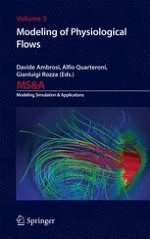
2012 | OriginalPaper | Buchkapitel
1. Assumptions in modelling of large artery hemodynamics
verfasst von : David A. Steinman
Erschienen in: Modeling of Physiological Flows
Verlag: Springer Milan
Aktivieren Sie unsere intelligente Suche, um passende Fachinhalte oder Patente zu finden.
Wählen Sie Textabschnitte aus um mit Künstlicher Intelligenz passenden Patente zu finden. powered by
Markieren Sie Textabschnitte, um KI-gestützt weitere passende Inhalte zu finden. powered by